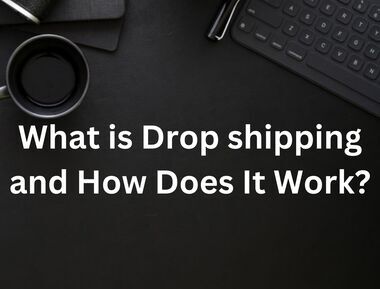Drop shipping is an innovative retail fulfilment method that has revolutionized the e-commerce landscape, allowing entrepreneurs to start online stores without needing to keep products in stock. This business model minimizes the risk and capital required to start a retail venture, making it an attractive option for newcomers and seasoned merchants alike. Here’s a closer look at what drop shipping is and how it works.

Understanding Drop shipping
At its core, drop shipping is a business model where the store owner sells products to customers without ever stocking the items themselves. When a store sells a product using the drop shipping model, it purchases the item from a third party and has it shipped directly to the customer. As a result, the seller doesn’t have to handle the product directly.
The biggest difference between drop shipping and the standard retail model is in inventory management. The selling merchant doesn’t keep goods in stock but instead relies on manufacturers, other retailers, or wholesalers to ship products directly to the customers.
How Does Drop shipping Work?
Drop shipping involves three key players: the manufacturer, the retailer (you), and the customer. Here’s how the process works step by step:
1. The Customer Places an Order: The journey begins when a customer places an order for a product on your online store.
2. Order is Forwarded to the Supplier: You then forward the customer’s order and shipment details to the drop shipping supplier, either manually or automatically, depending on your system’s setup.
3. Supplier Ships the Product: Upon receiving the order information, the drop shipping supplier prepares the product for shipment and sends it directly to the customer on your behalf. The supplier’s information, such as a return address and logo, can appear on the packaging, although some suppliers offer “blind shipping,” which allows you to use custom packaging and branding.
4. The Customer Receives the Order: The final step in the process is the customer receiving the order directly from the drop shipping supplier.
Key Components of Drop shipping
– E-commerce Website: Your online store is where customers will browse and order products. Platforms like Shopify, WooCommerce, and BigCommerce are popular choices for building an e-commerce website.
– Dropshipping Suppliers: These are manufacturers or wholesalers who offer drop shipping services, meaning they allow you to sell their products and handle fulfilment on your behalf.
– Sales and Order Management Tools: Many drop shippers use tools and plugins that integrate their e-commerce platform with their suppliers. This automation can streamline the process of forwarding orders to suppliers and updating stock levels.
Advantages of Drop shipping
– Low Startup Costs: Since you don’t need to purchase inventory upfront, the initial investment is much lower compared to traditional retail models.
– Flexibility: You can run a drop shipping business from anywhere with an internet connection.
– Wide Selection of Products: Without the need to pre-purchase all the items you sell, you can offer a significantly wider variety of products to your customers.
– Easy to Scale: Scaling a drop shipping business can be easier than scaling traditional retail models since most of the work to process additional orders is borne by the suppliers.
Disadvantages of Drop shipping
– Lower Profit Margins: Because it’s so easy to get started, many competitors can drive down profit margins.
– Inventory Issues: Since you’re not managing inventory, it can be challenging to keep track of which items are in and out of stock with your suppliers.
– Shipping Complexities: If you work with multiple suppliers, shipping costs can be challenging to calculate, and orders containing items from several suppliers can lead to higher shipping costs and more complex logistics.
– Less Control Over Order Fulfilment and Returns: Since the supplier handles shipping and fulfilment, any errors they make can reflect poorly on your business.
Conclusion
Drop shipping is a business model that offers a lot of flexibility and accessibility for those looking to enter the e-commerce space. While it comes with its own set of challenges, such as lower profit margins and less control over the supply chain, the benefits of low start-up costs and the ease of scaling make it an appealing option for many entrepreneurs. As with any business model, success in drop shipping requires a strategic approach, a clear understanding of your market, and strong partnerships with reliable suppliers.
